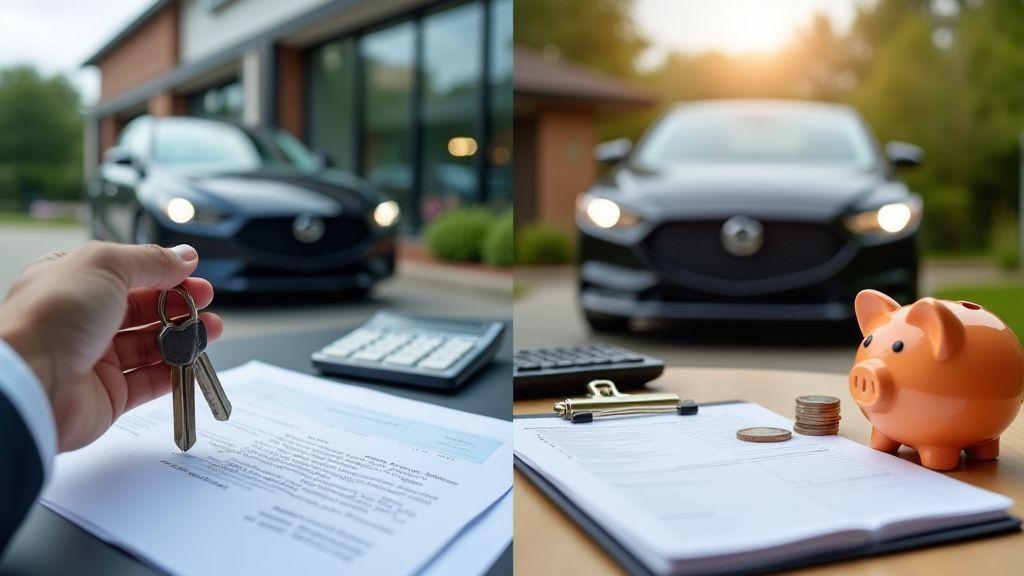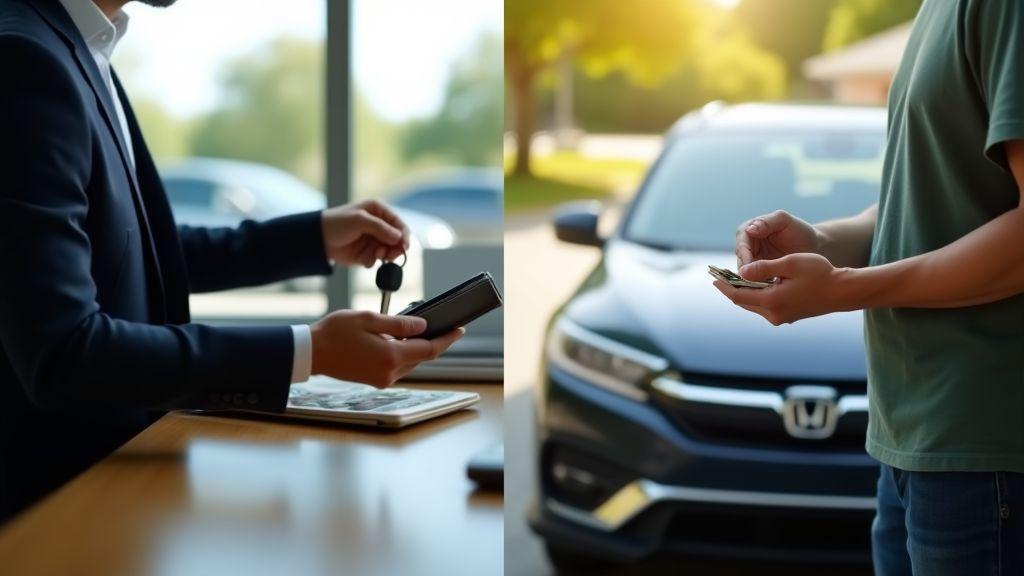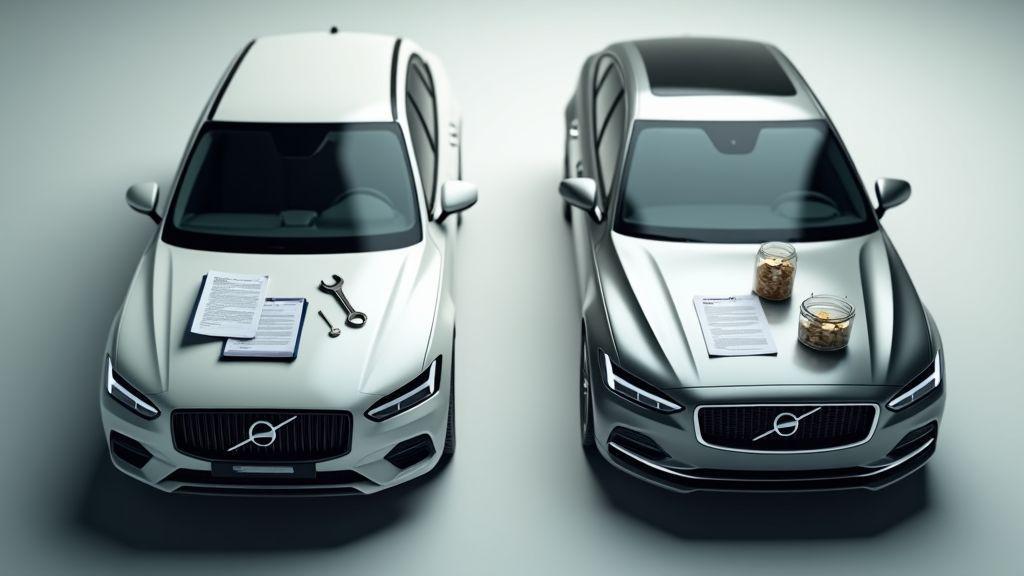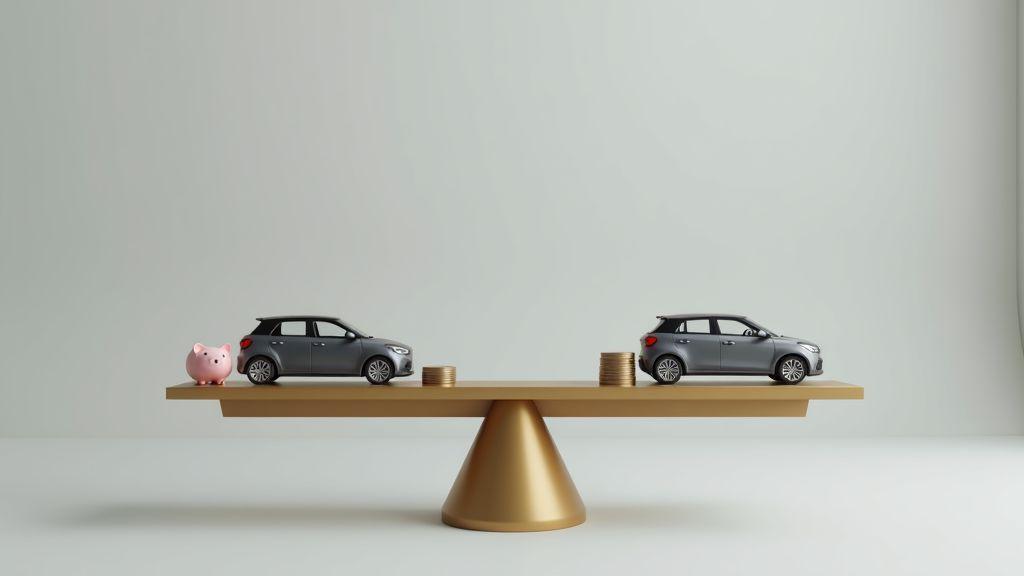Car Leasing vs Buying: Which One Saves You More Money?
You get a clear, practical guide to the real costs so you can choose wisely. You will see monthly payments, upfront costs, depreciation, taxes, and ongoing fees explained in plain terms. You learn who bears the depreciation risk and how that affects what you pay. You find how resale value, maintenance, and flexibility change the math. Use this to match the option to your budget and your lifestyle.
Key Takeaway
- You pay less monthly with a lease than with a loan.
- You may spend more over time if you keep buying cars.
- You avoid many repair costs with leased cars under warranty.
- You bear depreciation and loss of value when you buy.
- You get more flexibility to change cars when you lease.

Car Leasing vs Buying: Which One Saves You More Money? Quick cost comparison you can use
Leases usually win on lower monthly cost. If you like trading cars every few years, a lease often gives you a newer model for less cash out each month because you’re paying for depreciation during the term, not the full value. That can free up money for other priorities, but remember you don’t build equity in the vehicle.
Buying tends to cost more per month initially, but you own the car once the loan is paid. Over time that ownership reduces your monthly cost if you keep the car beyond the loan term. Ownership also means you absorb depreciation and resale risk, but you can sell or keep the car to lower your long-term cost.
To decide which saves you more, run the numbers on total cost: monthly payments, upfront fees, maintenance, insurance, taxes, and expected resale value. Small differences in interest rates, mileage, and how long you keep the car can flip the result.
Monthly payments: lease vs loan
A lease payment is usually lower because it’s based on the car’s expected value loss during the lease (residual value and money factor). Lower payments can make higher-trim cars affordable, but you return the car at the end unless you buy it out. See the CFPB guide to leasing versus buying for a practical consumer comparison of lease and buy payment tradeoffs.
Loan payments are higher because you pay principal plus interest on the full purchase price. If you keep the car past the loan term, your average monthly cost drops significantly. Shorter loans raise monthly cost but reduce total interest; longer loans lower monthly cost but often cost more overall.
Upfront costs and how they affect your budget
Leases often require lower upfront cash—first month’s payment, refundable security deposit, acquisition fee, and sometimes a cap cost reduction. Buying usually needs a larger down payment, taxes on the full purchase price, and registration. A higher down payment reduces your loan amount and monthly payment.
Typical upfront items to check: down payment, taxes & title, security deposit, acquisition fee, first month’s payment, and dealer fees.
Total cost of ownership: car lease vs buy at a glance
Below is a quick snapshot to help you compare the main cost buckets. Use this as a checklist when you crunch your numbers—little line items add up fast.
| Cost area | Lease | Buy |
|---|---|---|
| Monthly payment | Lower (depreciation only) | Higher (principal interest) |
| Upfront cash | Often lower | Usually higher |
| Depreciation risk | Low (borne by lessor) | High (you absorb loss) |
| Maintenance | Often covered under warranty | Higher over time |
| Insurance cost | Often higher (gap/full coverage) | Can be lower after loan ends |
| Flexibility | Limited (mileage, wear rules) | High (sell or keep) |
| Long-term cost | Lower short-term | Lower long-term if kept |

How depreciation affects your wallet
Depreciation is the value your car loses over time. When you lease, that loss is the core of what you pay each month—the lease spreads the expected drop in value across payments. When you buy, you pay the full price and absorb depreciation when you sell or trade. Your true owner cost equals depreciation plus interest, taxes, and upkeep, minus resale proceeds.
Put plainly: leasing smooths depreciation into predictable monthly costs; buying converts it into a lump loss you hope to recover later. If you drive a lot or want to change cars often, leasing’s monthly savings can look attractive. If you plan to keep a car long-term, buying usually lowers cost over many years. Read the FTC consumer guide to car leases for more on how residuals, fees, and wear rules affect depreciation exposure.
Who bears depreciation risk
In a lease, the lessor (finance company) accepts resale risk; you pay for expected loss and face penalties for excess wear or mileage. As an owner, you bear the depreciation risk and can suffer negative equity if resale prices slide.
Decide how long you’ll keep the car, estimate annual miles, and compare lease residuals versus expected resale for your model.
Depreciation: example in real numbers
Example: MSRP $35,000, 3-year residual 55% → residual $19,250. Depreciation = $15,750 over 36 months. In a lease you pay that depreciation (plus fees), so monthly depreciation cost ≈ $438. As a buyer you face that $15,750 loss if you sell after three years, plus interest — monthly effective cost often $470–$520 once finance charges are included.
| Scenario | MSRP | 3-year Residual | Depreciation over 3 years | Monthly depreciation equivalent |
|---|---|---|---|---|
| Lease (example) | $35,000 | $19,250 (55%) | $15,750 | $438 |
| Buy (example) | $35,000 | $19,250 (55%) | $15,750 interest | $470–$520 (est.) |

Tax benefits: leasing vs buying
Leasing and buying change your tax bill differently. Lease payments can often be deducted if you use the car for business, lowering taxable income right away. Buying lets you deduct depreciation and loan interest over time. Which saves more depends on business use, how long you keep the car, and state rules.
Small differences in tax treatment can shift totals by hundreds or thousands. If you’re asking “Car Leasing vs Buying: Which One Saves You More Money?”, tax rules are often the tiebreaker.
Business-use rules to know
- Keep a mileage log and receipts (see the site privacy policy for guidance on handling personal data).
- Section 179 and bonus depreciation apply to purchases, not leases.
- Sales tax treatment varies by state—sometimes taxed on payments, sometimes on full price.
- Luxury car limits cap depreciation on expensive purchases.
- Lease buyouts may trigger taxes and change deduction options.
For authoritative IRS rules about depreciation and Section 179, see the IRS guide to depreciation and Section 179.
| Tax Factor | Lease | Buy |
|---|---|---|
| Deductible payments | Lease payments deductible (business use) | Depreciation interest deductible (business use) |
| IRS accelerated write-off | Not eligible for Section 179/bonus | Eligible (subject to limits) |
| Sales tax timing | Often taxed on monthly payments (state-dependent) | Often taxed on purchase price up front or financed |
| Registration/fees | Often rolled into payments | Paid up front or annually, based on ownership |
| Best for short-term/business turnover | Yes | Best for long-term ownership and high depreciation needs |

Ongoing costs: maintenance, insurance, and fees
Leasing often keeps you under factory warranty for the full term, so major repairs are usually covered. But leases have wear-and-tear and mileage limits; exceeding them incurs fees. Buying makes you responsible for repairs after warranty, so budget for long-term maintenance and unexpected fixes.
Insurance and extra protections change monthly math. Leases require full coverage and often gap insurance, raising premiums. Once you own a car outright, you can reduce coverage and cut premiums.
| Cost driver | Lease | Buy |
|---|---|---|
| Warranty / major repairs | Usually covered during term | Covered only during warranty; you pay later |
| Maintenance | Routine may be included (sometimes) | You pay for routine & unexpected |
| Insurance required | Full coverage often gap | Full coverage if financed; can reduce later |
| End-of-term charges | Possible wear/mileage fees, disposition fee | No end fee; resale value matters |
| Upfront cash | Lower down but fees may apply | Higher down payment taxes |
Warranty coverage and maintenance plans with a lease
Leased cars are usually new and under factory warranty for the lease length. Dealers may sell maintenance packages that cover service for the term; they bump monthly payments but simplify budgeting. Read the fine print and review the lease terms and conditions carefully—wear items like pads and tires aren’t always covered.
Insurance and gap coverage
Leases require comprehensive and collision with higher limits; gap insurance is often expected. That increases monthly insurance costs compared with ownership after loan payoff. If you finance a purchase, you’ll also need full coverage until the loan is paid. The Auto insurance basics and coverage requirements explain common coverages and how gap policies work.
Flexibility and lifestyle: lease terms, mileage, and your choices
A lease gives lower monthly payments and a fixed term (commonly 24–36 months) so you can swap cars often. But mileage and wear rules are real costs if you exceed them. Buying gives freedom to drive as much as you want and modify the car, but monthly payments and long-term maintenance can be higher.
Match the term to your life: short commute? A lease with a lower cap might save money. Long trips? Buying or a high-mileage lease makes more sense.
Mileage limits, excess charges, and how they affect savings
Leases set a mileage cap—often 10k–15k miles per year. If you go over, you pay an excess charge per mile (commonly $0.10–$0.30). Those fees add up fast and can wipe out lease savings. Compare your actual driving to national averages in the National travel survey for average mileage to see whether a typical lease cap fits your driving patterns.
| Item | Lease (15k/yr) | Buy |
|---|---|---|
| Typical monthly payment | Lower | Higher |
| Extra-mile cost | $0.10–$0.30/mile | None |
| Best if you drive | Under cap | Over cap |
| End result after extra miles | Surprise bill | No penalty |
Early termination, lease-end buyouts, and steps to take
Leaving a lease early can be expensive. Check for early payoff, lease transfer options, or negotiate a buyout. Compare buyout price vs. market value and refinance options. Consider lease-transfer marketplaces before paying penalties.
- Check your lease contract for early termination and buyout terms.
- Call the leasing company for payoff quotes and transfer rules, or use the site contact page to ask about options.
- Compare buyout price vs. market value.
Long-run finance: which is cheaper — buy to keep or lease repeatedly?
If you ask “Car Leasing vs Buying: Which One Saves You More Money?” the answer depends on how long you keep cars and what you value. Buying locks money into equity and lets you spread the price over years. Leasing lowers monthly cost but keeps you paying if you always lease—repeated leases are like a subscription.
Over the long run, depreciation, interest, and maintenance drive costs. New cars lose value fast in the first 3 years. If you buy and keep a car past that steep drop, annual cost often falls. If you lease repeatedly, you continually pay depreciation plus lease fees and never build equity.
Total cost over 3–5 years: buy vs lease scenarios
Example buy: $30,000 car with $3,000 down and $500 monthly loan. Over 3 years you pay roughly $21,000 in loan payments plus about $1,200 in maintenance. If resale after 3 years is $18,000, your net cash outflow is about $4,200 after sale (ignoring taxes/fees). Over 5 years your out-of-pocket falls as loan balance drops and repairs accumulate.
Example lease: 3 years at $300/month with $1,000 drive-off and $350 disposition fee totals about $11,450 and leaves you with no trade-in value. Leasing again for years ramps total cost without equity.
| Scenario | 3-year cash outflow (approx) | 5-year cash outflow (approx) | Ending equity/value |
|---|---|---|---|
| Buy ($30k, $3k down, $500/mo) | $22,200 (payments maintenance) | $34,200 | Sell for $18,000 at 3 yrs; lower at 5 yrs |
| Lease ($300/mo, $1k drive-off) | $11,450 (payments fees) | $19,150 (two leases) | $0 equity |
Equity, trade-ins, and resale value when you buy
When you buy, you build equity as you pay down the loan and the car retains value. That equity becomes cash when you trade or sell and reduces future loan amounts. Resale value matters: popular makes, low mileage, and good condition keep value higher. If you plan to keep a car 5 years, resale often proves buying cheaper. If you flip cars every 2–3 years, fees, taxes, and price swings can erase gains.
Long-run comparison: which is cheaper?
Over the long run, buying and keeping a car almost always costs less than leasing repeatedly because you stop making large payments once the loan is paid and recover some value through resale. Leasing feels cheaper short-term, but repeated leases keep you paying without building equity.
Car Leasing vs Buying: Which One Saves You More Money? — Quick answers
- If you prioritize lower monthly payments, predictable short-term costs, and frequent upgrades: lease likely saves you money short-term.
- If you want lower lifetime cost, fewer recurring payments, and an asset you can sell: buy usually saves more over many years.
- If you drive a lot, buy; if you drive little and want new cars, lease.
- Tax and business-use specifics can flip the result—run the numbers for your situation.
Conclusion
You’ve got a clear choice: lease for lower monthly payments, newer cars, and predictable short-term costs — or buy to build equity, absorb depreciation, and lower your cost if you keep the car long-term.
Leasing puts less cash out front and keeps major repairs mostly off your tab, but you trade ownership and accept mileage and wear limits. Buying costs more today, but you own the asset and your average monthly cost usually falls after the loan ends.
Make the decision like you would pick a pair of shoes: fit it to your life. Crunch the total cost (monthly payments, upfront fees, interest, taxes, maintenance, and expected resale value). Watch for the small line items that turn a good deal into a headache.
If you want more examples, scenarios, and calculators to run the numbers for your situation, visit the Meridian Pioneer home page or get in touch through our contact page.

